Nvidia GeForce RTX 3060 Ti: 3440×1440 ultrawide benchmarks - lawsonsplays
Nvidia's new A graphics architecture is finally crawl John L. H. Down to more mainstream (read:affordable) card game, and the $400 GeForce RTX 3060 Ti delivers performance faster than the RTX 2080 Super—last generation's indorse well-nig powerful GPU—for half the cost.
We've already declared Nvidia's latest offering a spectacular 1440p graphics card in our comprehensive GeForce RTX 3060 Ti review, but how does it handle itself at a to a greater extent strenuous 3440×1440 ultrawide resolution that splits the remainder betwixt 1440p and 4K?
Permit's find out.
Nvidia GeForce RTX 3060 Ti 3440×1440 ultrawide benchmarks
We conducted our tests along the $550, 144Hz Nixeus EDG34S monitor we've exploited for prior ultrawide testing. It's an outstanding value for the toll, if a bit short on features. While the expose only formally supports AMD's FreeSync Premium adjustive synchronize technology, you can manually activate G-Sync in Nvidia's master panel and information technology full treatmen like a captivate. You'll need to consumption the monitor's on-screen display to activate adaptive sync first, however.
Here's a list of what's inside our GPU test system, which was built to minimize potential bottlenecking in unusual components, putting the full brunt of the tests on the artwork card itself:
- Intel Core i7-8700K CPU ($300 on Amazon) overclocked to 5GHz all-core
- EVGA CLC 240 closed-loop liquid cooler ($105 happening Amazon)
- Asus Maximus X Hero motherboard
- 64GB HyperX Predator RGB DDR4/2933 ($355 on Amazon)
- EVGA 1200W SuperNova P2 power supply ($352 on Amazon)
- Corsair Vitreous silica 570X RGB case, with front and top panels removed and an extra can lover installed for improved air flow
- 2x 500GB Samsung 860 EVO SSDs ($70 each connected Amazon)
Each game is tested using its in-game benchmark at the highest possible graphics presets unless otherwise noted, with VSync, frame pace caps, real-time ray tracing operating theatre DLSS personal effects, and FreeSync/G-Sync disabled, along with any other vendor-specific technologies the like FidelityFX operating theater Hairworks. We've also enabled worldly anti-aliasing (TAA) to push these cards to their limits when it's on hand. Check impermissible our cram full GeForce RTX 3060 Si review for deeper insight into our methodological analysis.
We'll just be presenting the raw benchmark results after introducing each game. Skim to the end for deeper analysis if you want our thoughts on performance.
Watch Dogs: Horde
Watch Dogs: Legion is one of the first games to debut on next-gen consoles. Ubisoft upgraded its Disrupt engine to let in cutting-edge features like real-time ray tracing and Nvidia's DLSS. We disable those personal effects for this testing but Host remains a strenuous game even on high-end hardware with its optional graduate-resolution texture pack installed. No card can preserve a 60-frames-per-second average with Radical graphics options enabled, and the game allocates to a higher degree 8GB of memory equal at 1440p. Oof.
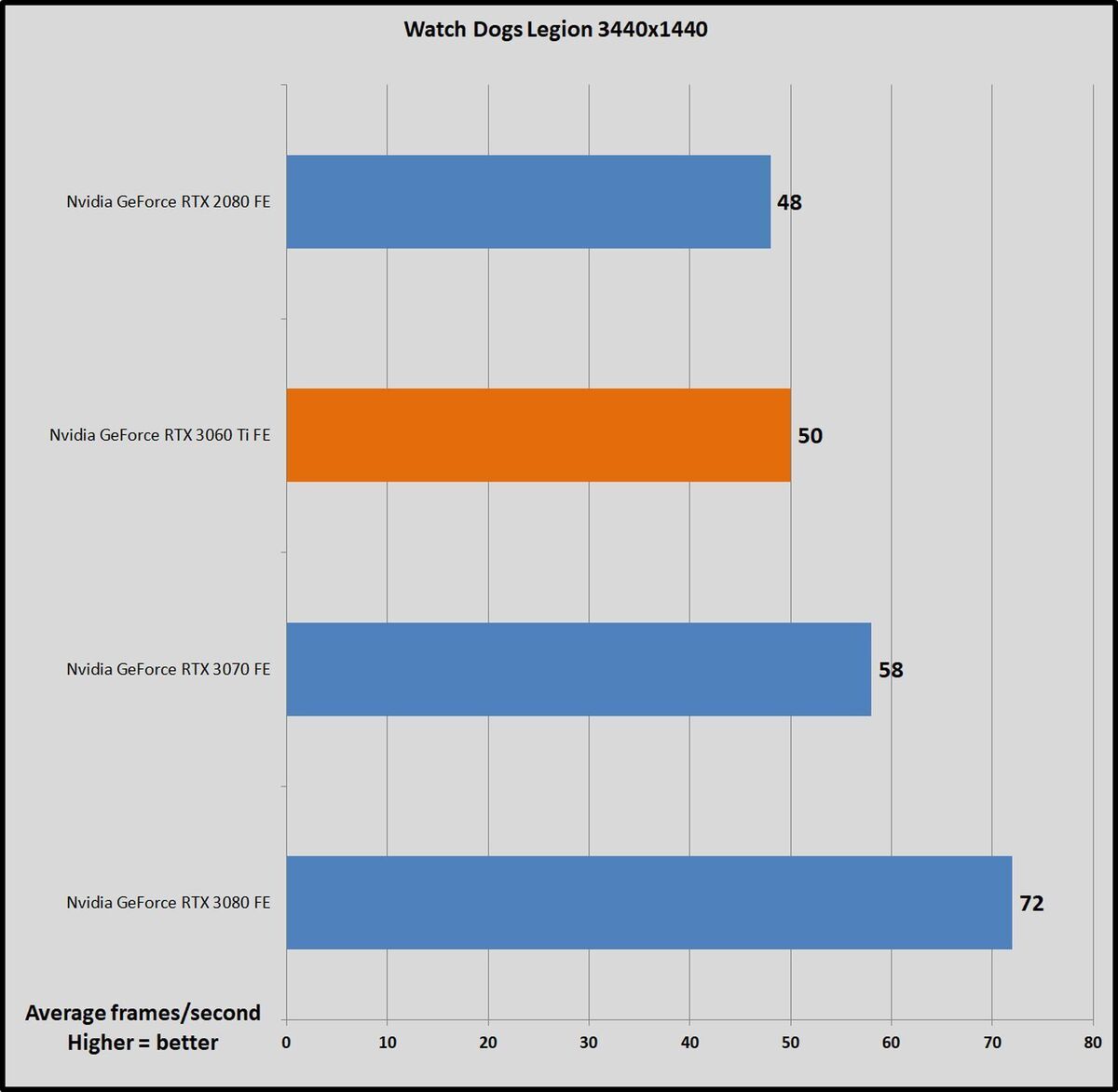 Brad Chacos/IDG
Brad Chacos/IDG Horizon Zero Dawn
Yep, Sony exclusives are hitting the PC now. Horizon Ordinal Dawn runs along Guerrilla Games' Decima engine, the selfsame engine that powers Death Stranding. Ambient Occlusion can buoy standing offer fluky results if set to Radical, so we test thereupon setting at Medium. Every other visual option is maxed out.
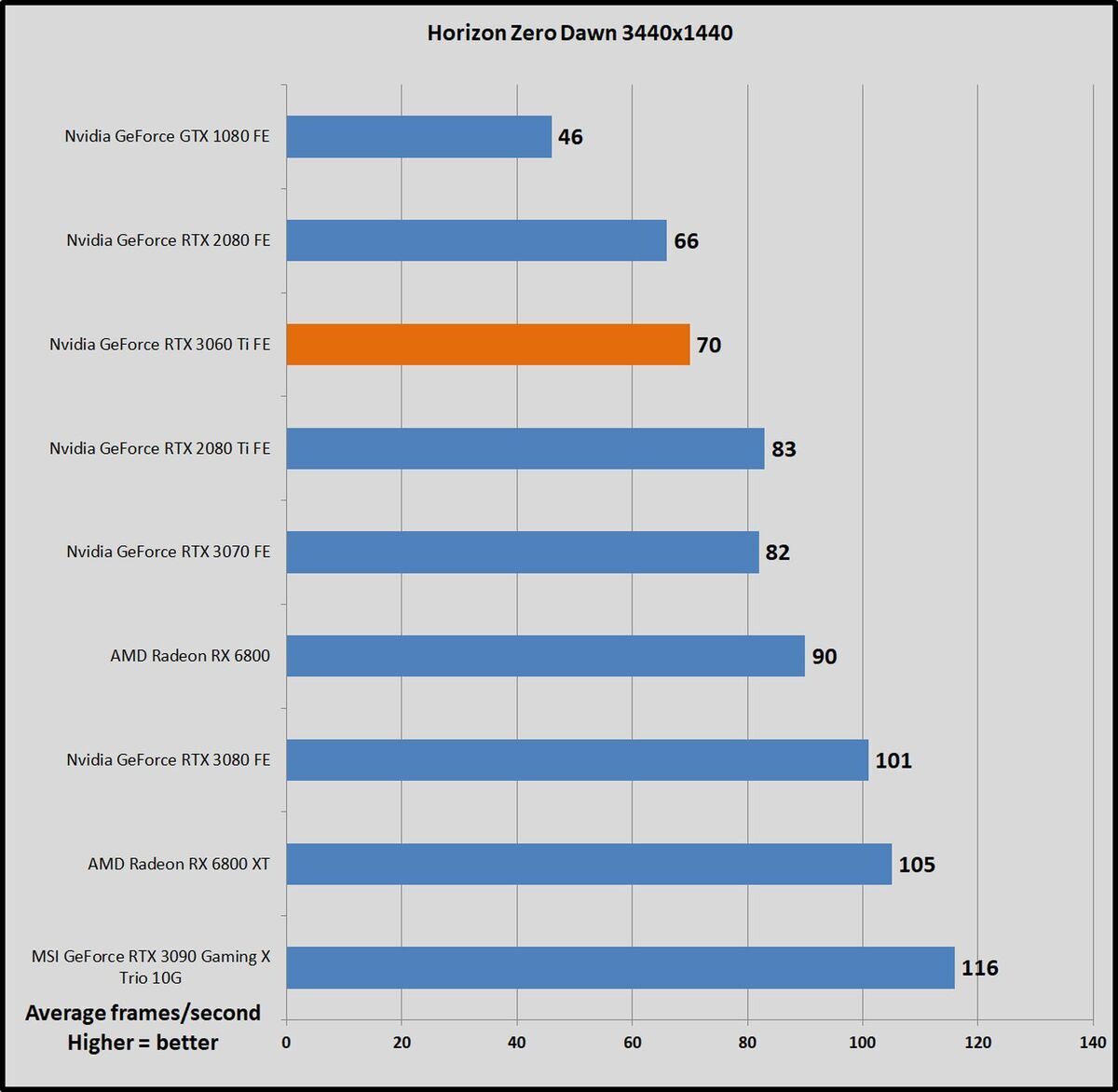 Brad Chacos/IDG
Brad Chacos/IDG Gears Tactics
Gears Tactics puts it own inhumane, fast spin on the XCOM-like genre. This Unreal Locomotive 4-powered gimpy was built from the ground up for DirectX 12, and we love being able to work a tactics-mode game into our benchmarking retinue. Better yet, the game comes with a plethora of graphics options for PC snobs. More games should devote such touchy-feely care to explaining what flipping all these visual knobs mean.
You rear't use up the presets to bench mark Gears Manoeuvre, as information technology intelligently scales to form best on your installed hardware, signification that "Ultra" on one graphics identity card can load assorted settings than "Ultra" on a weaker card. We manually fix all options to their highest possible settings.
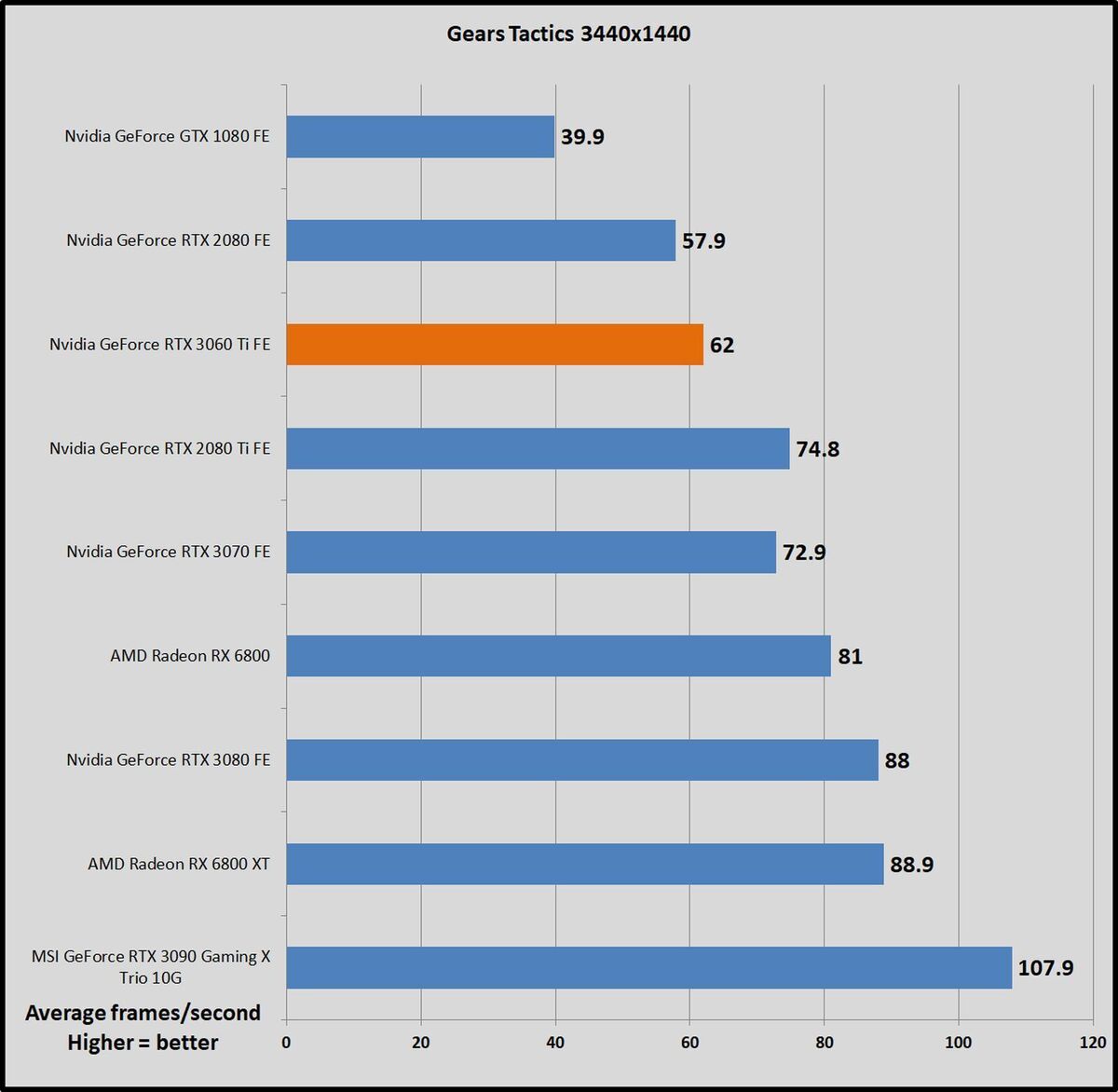 Brad Chacos/IDG
Brad Chacos/IDG Subway system Exodus
One of the first games of 2019, Metro Exodus is one of the best-looking games around, too. The latest version of the 4A Engine provides incredibly juicy, immoderate-detailed visuals, with one of the most stunning period ray trace implementations discharged yet. We quiz in DirectX 12 mode with shaft trace, Hairworks, and DLSS handicapped for our basic benchmarks.
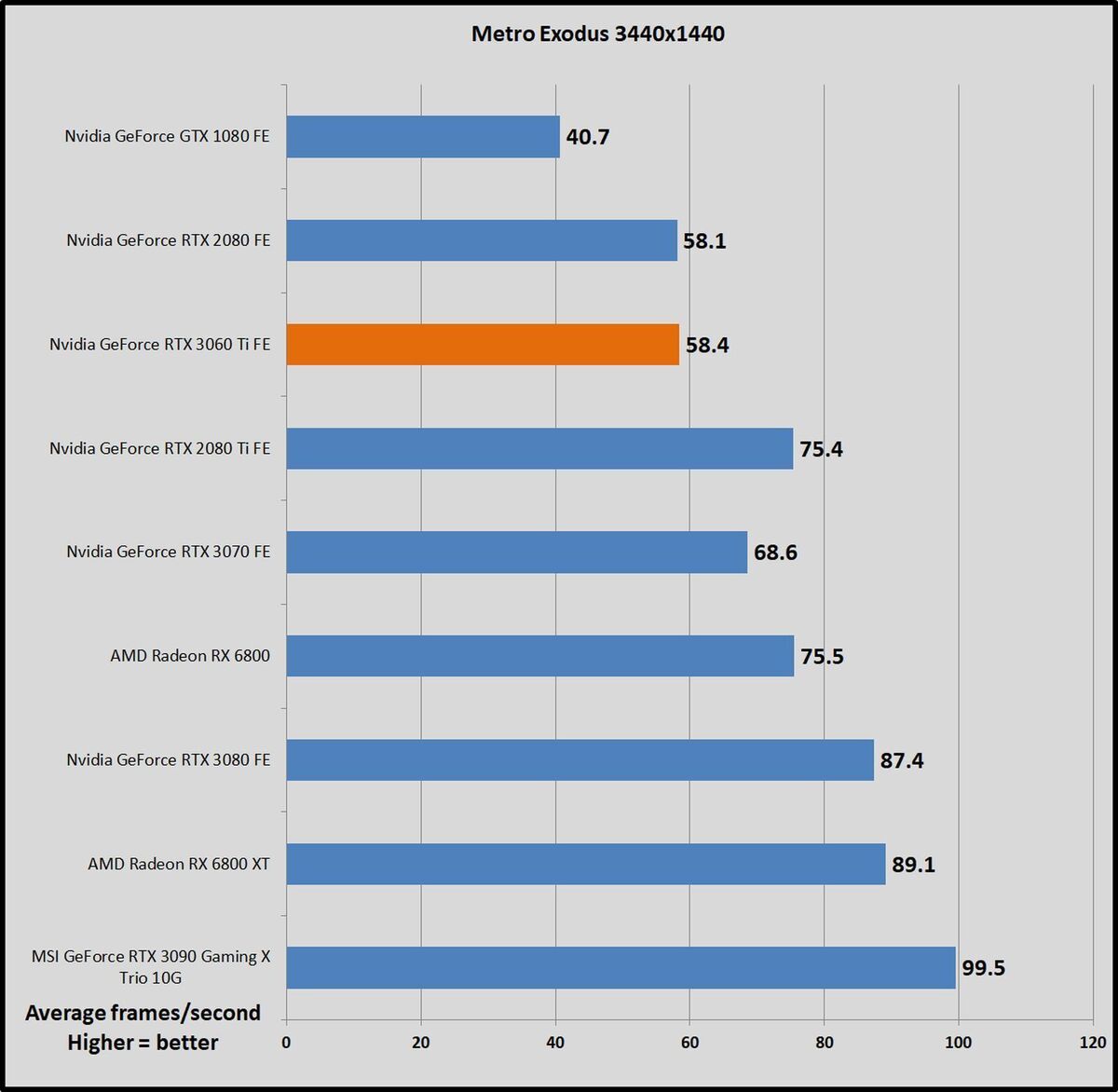 Brad Chacos/IDG
Brad Chacos/IDG Wolfenstein: Youngblood
Wolfenstein: Youngblood is more fun if you can play hand and glove with a buddy, just it's a fearless experiment—and an absolute technical showcase. Running on the Vulkan API, Youngblood achieves blistering frame rates, and it supports all sorts of cutting-edge technologies like ray tracing, DLSS 2.0, HDR, GPU culling, asynchronous computation, and Nvidia's Content Adaptive Shading. The game includes a inherent benchmark with deuce different scenes; we tested Lab X.
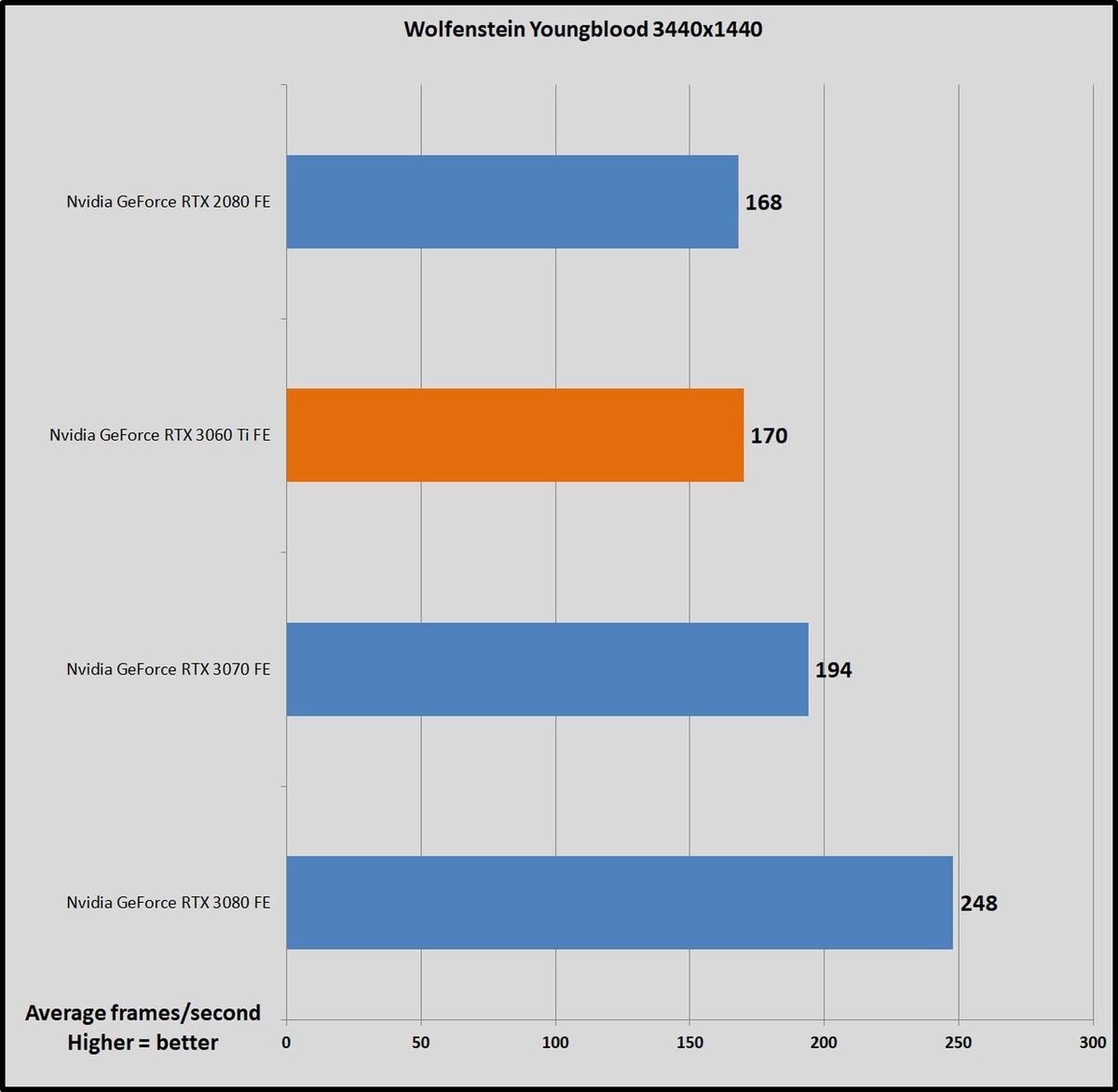 Brad Chacos/IDG
Brad Chacos/IDG Strange Brigade
Strange Brigade is a cooperative third-person shooter where a team of adventurers blasts through hordes of mythic enemies. It's a technological vitrin, built or so the next-gen Vulkan and DirectX 12 technologies and infused with features like HDR support and the ability to toggle asynchronous compute happening and off. It uses Rebellion's custom Azure locomotive engine. We test using the Vulkan renderer, which is faster than DX12.
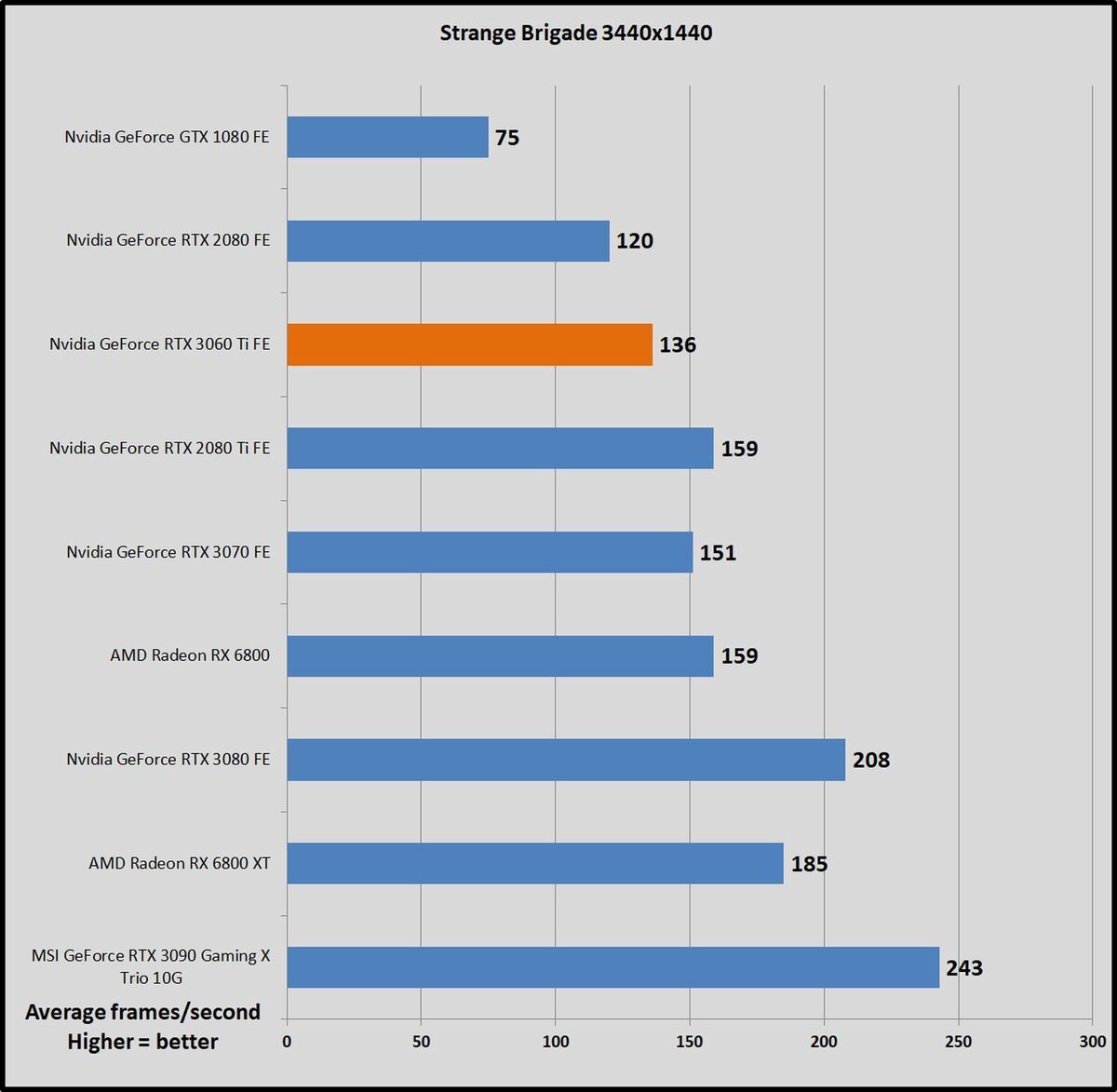 Brad Chacos/IDG
Brad Chacos/IDG Add State of war: Troy
The stylish gage in the popular Whole War saga, Troy was disposed away free for its first 24 hours along the Epic Games Store, moving over 7.5 million copies before it went on proper sale. Total War: Ilion is built using a modified version of the Total State of war: Warhammer 2 engine, and this DX11 title looks stunning for a turning-settled strategy game.
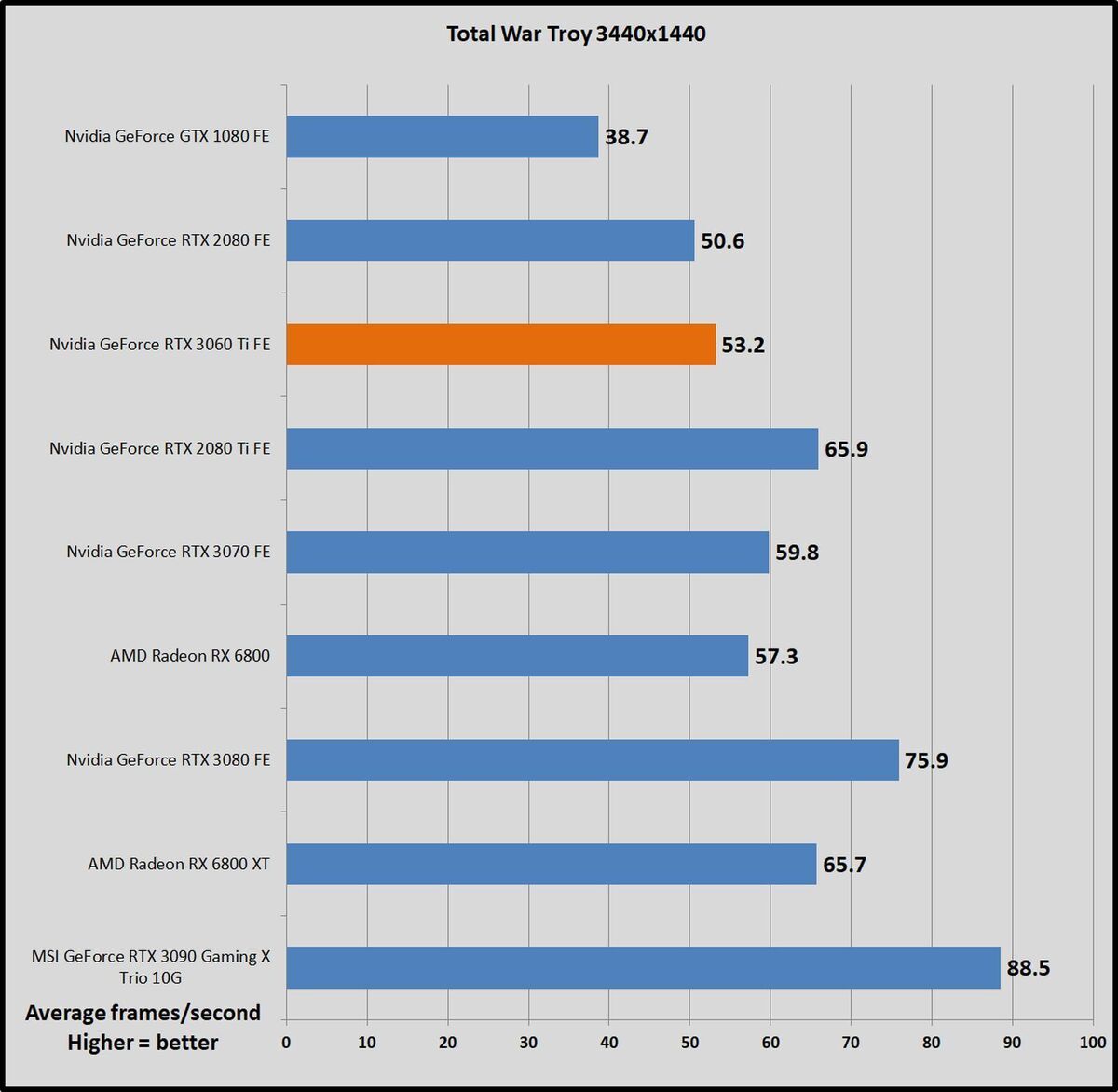 Brad Chacos/IDG
Brad Chacos/IDG Dark of the Tomb Raider
Shadow of the Grave Raider concludes the reboot trilogy, and it's absolutelygorgeous. Solid Enix optimized this game for DX12, and recommends DX11 only if you're using older hardware or Windows 7, so we test with DX12.Darkness of the Grave Raider uses an enhanced version of the Foundation engine that also poweredRise of the Grave Raider. IT includes optional real-meter ray tracing and DLSS features.
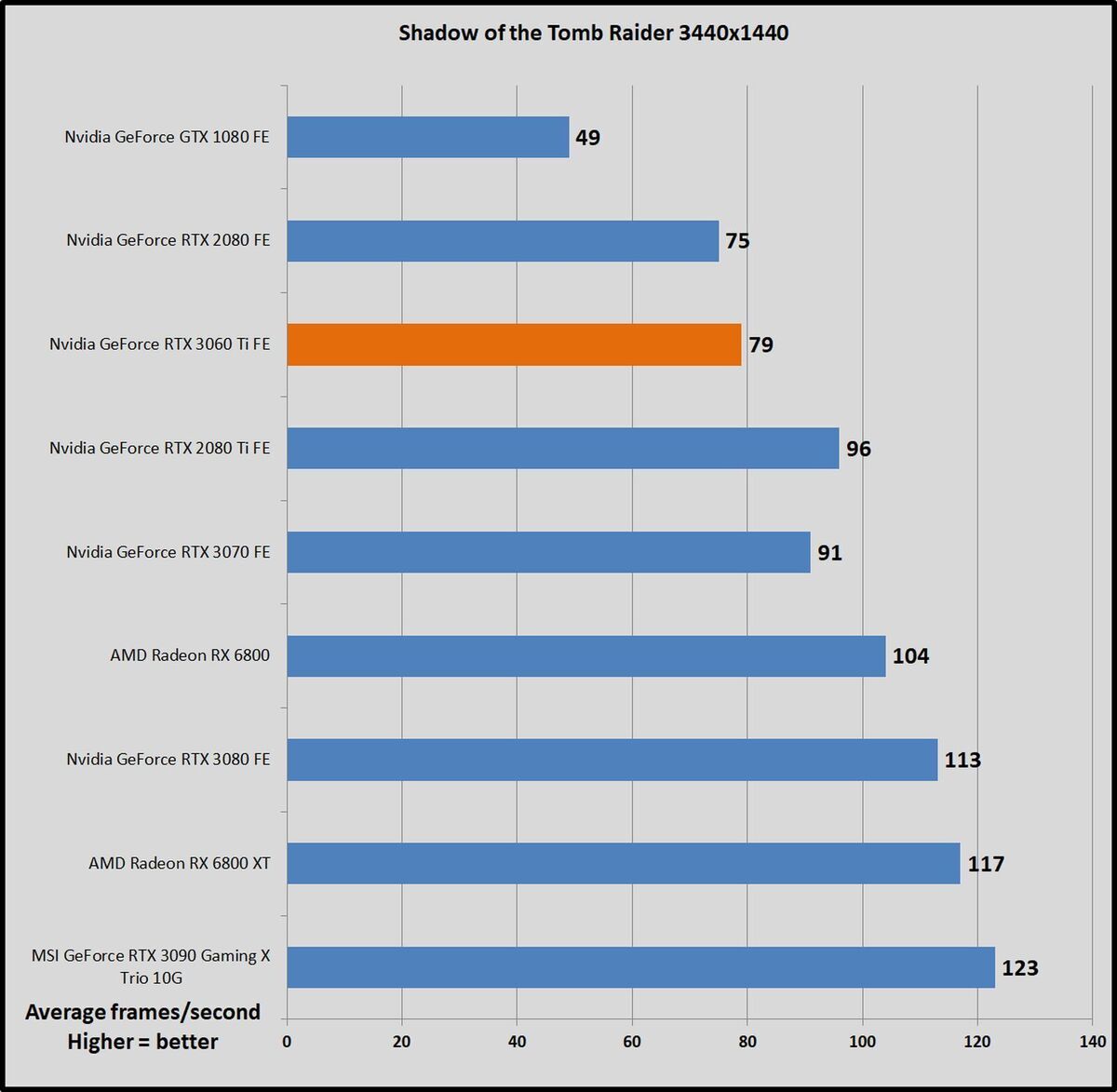 Brad Chacos/IDG
Brad Chacos/IDG Rainbow Six Siege
Suchlike GTA V, Ubisoft's Rainbow Six Siege still dominates the Steam charts years after its launch, and IT'll be getting a visual upgrade for the next-gen consoles. The developers have got poured a ton of work into the game's AnvilNext engine ended the age, eventually rolling dead a Vulkan version of the game that we use to psychometric test. Past nonpayment, the game lowers the render scaling to increase soma rates, but we curing it to 100 percent to benchmark native rendering performance on graphics cards. Even still, frame rates soar.
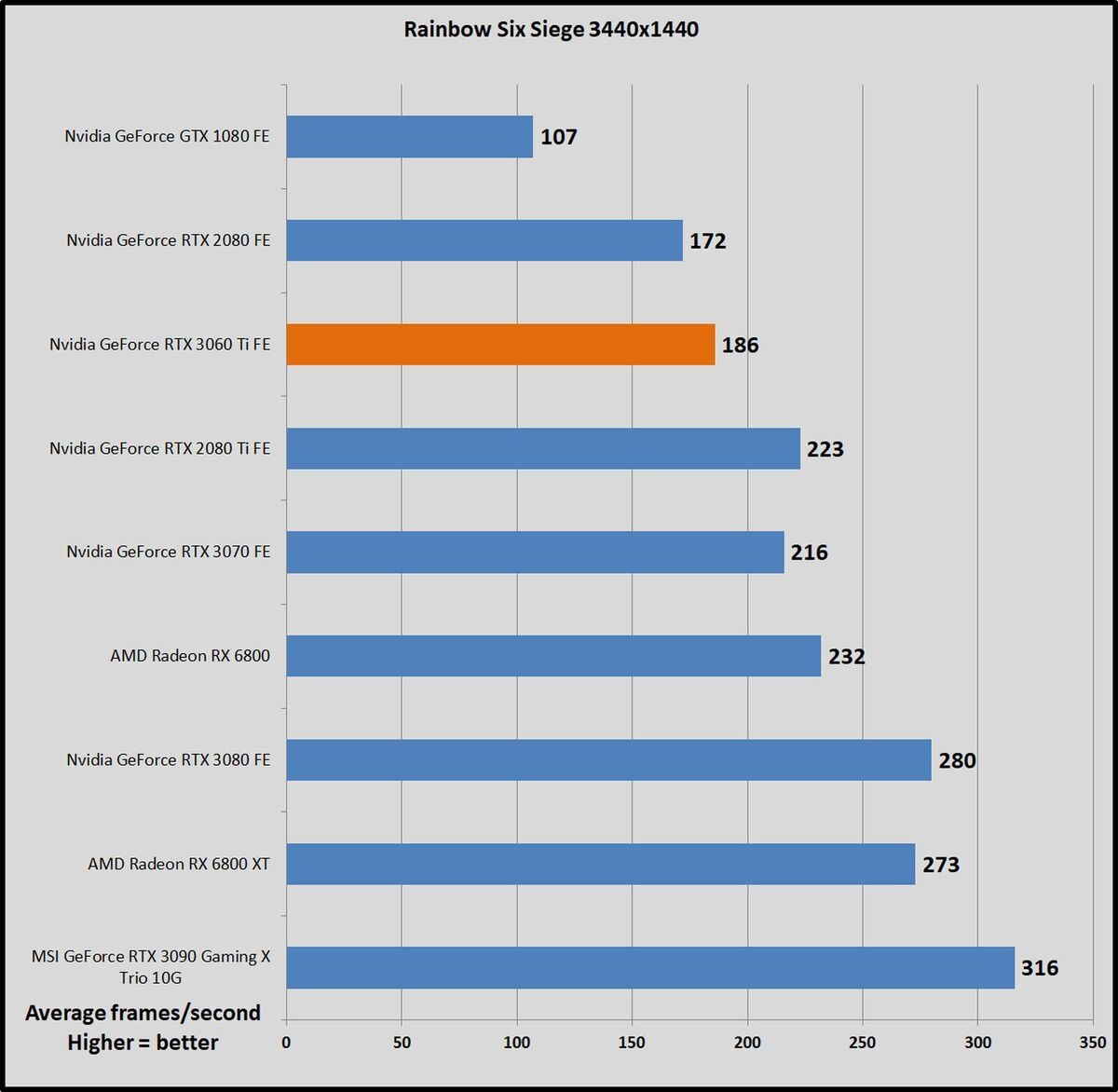 Brad Chacos/IDG
Brad Chacos/IDG Final thoughts and analysis
Even with all the eye candy cranked to maximum, the GeForce RTX 3060 Te managed to achieve the 60-frames-per-second chromatic standardized in every game but Watch Dogs Host and Tally War: Troy. The maxed-out presets in those games are especially tough, however, and Nvidia's card managed to unclutter 50 fps even below those awkward conditions. Dropping things from Ultra to Senior high would send frame rates soaring beyond 60 fps (and is something I recommend most gamers do in most games), or you could tinker with individual graphics options to achieve the Saame result. Less energetic titles like Strange Brigade, Rainbow Six Siege, and Wolfenstein Youngblood blow well past the 100-Federal Protective Service mark.
Those are outstanding results for a $400 graphics card. Again: This level of performance cost twice as untold live generation.
If you wanted a unimportant more zing to get closer to 60 fps without junior visual compromises in punishing titles, consider the footmark-dormie $500 GeForce RTX 3070. It's not a worthwhile upgrade for most common people on a standard 1440p monitor, oblation just 9- to 13-pct more carrying into action than the RTX 3060 Ti piece costing 25 percent more, but that uplift increases to all but 17 percent in umpteen games at 3440×1440 resolution. Nvidia's Ampere architecture scales meliorate at higher resolutions. If you have an ultrawide monitor, it's worth reasoning about, as it's a more tangible difference.
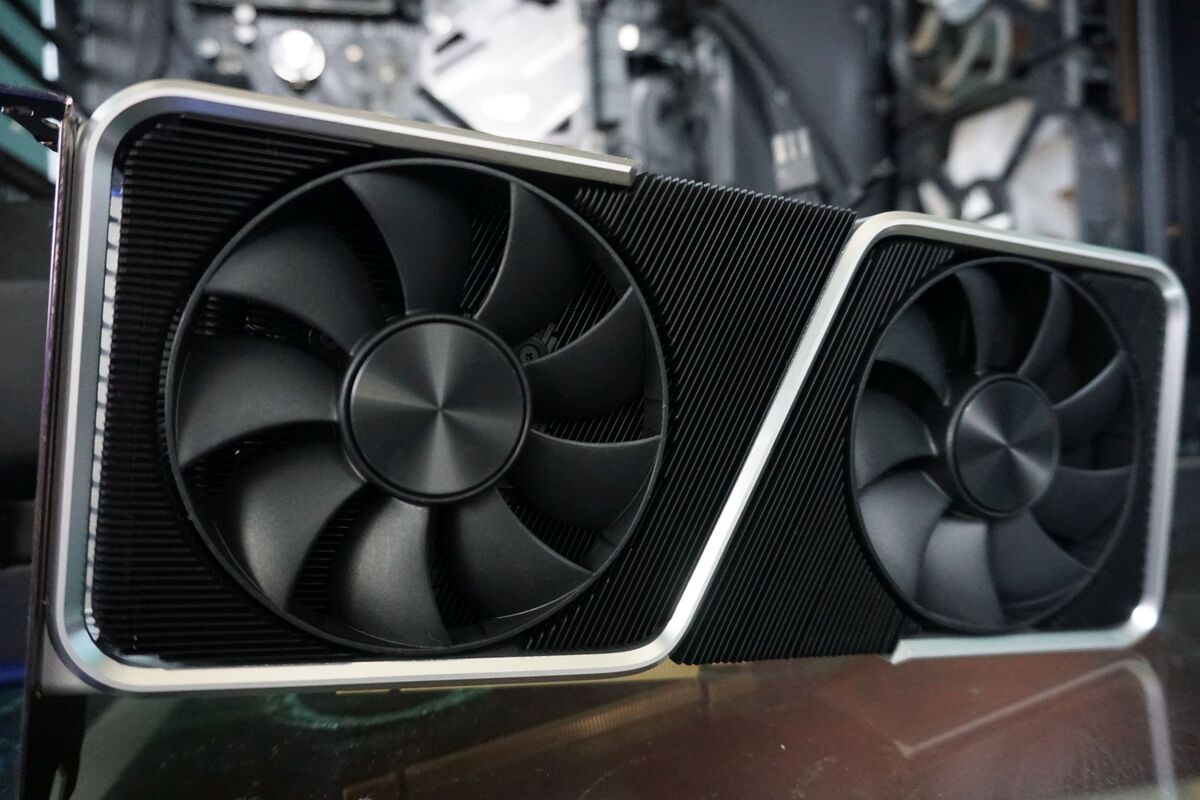 Brad Chacos/IDG
Brad Chacos/IDG Nvidia's GeForce RTX 3060 Ti Founders Edition.
Spending even more on a graphics card leave get you even more frames, but crucially, it will also get you much storage. In our GeForce RTX 3060 Si review, we praised the card's 8GB of GDDR6 memory for 1440p gaming, but reticular that it might not hold up well o'er the semipermanent term for 4K gaming. The 8GB capacity should live on punter for ultrawide gaming in the years to come, because 3440×1440 splits the difference 'tween 4K and 1440p.
I'd experience comfortable buying this graphics scorecard for use with an ultrawide monitor, because I don't mind fine-tuning textures and other visual written options if—if—it winds up becoming needed. If you'd be more comfortable with Thomas More VRAM, check into the $700 RTX 3080, $1,500 RTX 3090, operating theater AMD's rival Radeon RX 6800-series options. (The RTX 3070 offers the same 8GB of GDDR6 atomic number 3 the RTX 3060 Ti.) You could also wait to see what AMD will eventually offer in this price range, as those Radeon 6800-serial GPUs inner circle in much more memory than their GeForce competition. AMD could keep the trend going with more than inexpensive releases.
That about wraps this prepared. Again, check out our full GeForce RTX 3060 Titanium Founders Edition reassessmen for more detailed info on Nvidia's 2080 Large-usurping beauty. Give the $550 Nixeus EDG34S a solid take care if you're planning on upgrading to 144Hz 3440×1440 to cooccur with it.
Source: https://www.pcworld.com/article/393768/nvidia-geforce-rtx-3060-ti-3440x1440-ultrawide-benchmarks.html
Posted by: lawsonsplays.blogspot.com


0 Response to "Nvidia GeForce RTX 3060 Ti: 3440×1440 ultrawide benchmarks - lawsonsplays"
Post a Comment